Best knife for deer hunters? Good luck choosing just one!
But here are some knives I have “blooded” and used in actual hunting scenarios over the past couple years. You can rely on any of these.
by Leon Pantenburg
The shot was successful, and you walk up to the fallen deer. You stand over it, pausing for a couple moments (I hope), to be thankful for the gift you just received.
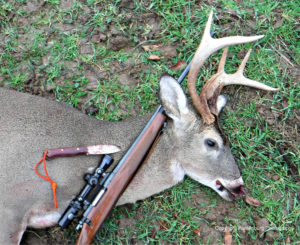
When it’s time to put venison on the table, I rely on my Ambush Tundra and Remington 700 7mm-08. This harvest happened in January, 2018.
Then it’s time to get to work field dressing the deer. What you do in the next hour or so will directly impact how good the meat tastes over the next few months. And your most important tool will be your hunting knife.
Last deer season, I was lucky enough to harvest four deer with four shots in two states. All these were killed in solo hunts, and three times, I had to field dress, skin and quarter the animal, by myself with no help, before hauling it out to the road. I won’t carry a knife I can’t depend on.
Bottom line: A successful hunter needs a good hunting knife. What works for me may not work for you and vice versa. And every hunter has a favorite knife. But suppose you want to upgrade, or are looking for a better tool? What do you want to invest in?
Let’s start the hunting knife conversation (since this is all my opinion anyway) with my prejudices.
No Folders: I love pocket knives. For years, a Buck model 317 folder was my go-to knife for southeastern hunting. And I carry a Swiss Army Knife Tinker and a SAK Companion every day. But any folder’s weak point is the hinge. Break that, and the knife is disabled. A knife that might have to do double duty as a survival tool needs to be sturdy.
No choil: A choil is a ground out space on the blade, by the handle. Proponents claim the choil allows you to “choke up” on the blade for fine work. The choil eliminates one of the most useful areas of the blade, right next to the guard, IMHO, and reduces the cutting edge. I own and use many knives, of all sorts of sizes and configurations. None of them have a choil. (Here is the proper way to use a choil on a knife.)
Blade length: A blade between four-to-six-inches is my preference. Ask any professional butcher what he uses on a daily basis, and he’ll probably recommend a longer blade. Eric Addy, the butcher who lets me test knives at his shop, uses a 10 or 12-inch breaking knife for most of his meat processing work.
Safe Handle: A non-slip handle is paramount. Inevitably, the knife will get covered with blood and body fluids during a gutting operation and a slippery handle is dangerous. A well-designed handle, made of micarta or wood, that fits your hand is going to be safer than a soft, rubbery, smushy handle that doesn’t.
Do you wear gloves when using a knife or processing an animal? If so, make sure the handle is safe to use with them on.
No gut hook: The gut hook ground into the spine is worthless. The hook is only good for that initial spine down, belly up cut that opens up the abdominal cavity. You can catch your hand or clothing on the hook, and the grind eliminates a useful part of the spine. If you must have a gut hook, buy a cheap, specialized tool. Don’t permanently screw up your knife, for something you don’t need and won’t use much.
In no particular order, here are some hunting knives I have used and that you can depend upon.
Jesse Hemphill Custom Damascus: Who is going to take an expensive safe queen out into the field to use for the bloody, messy work of gutting a mule deer?
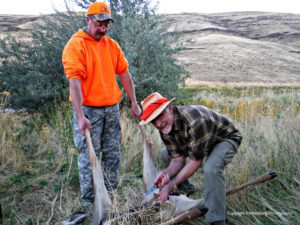
I used a Jesse Hemphill Damascus blade to field dress this Oregon mule deer. My brother Mike has been my hunting partner since he was 12.
Me.
All my knives are users, and they will be used for the purpose they were designed for. If the knife is beautiful, in addition to being useful, so much the better.
I checked out the Custom Damascus as a gutting knife – where it worked great – and later did some skinning with it. The steel held an edge nicely, and the handle design, pretty as it was, worked really well, even when bloody.
To read the whole story, go to Damascus review
Jesse Hemphill Town Creek II: I used two Hemphill hunting knives last season, and was impressed with both of them. The workmanship is superb, and the designs worked really well.
I particularly like the handle on the Town Creek – I have large hands, and my knife frequently gets bloody and slimy. This could be really dangerous if you can’t securely hold the knife. I also wear cut resistant and/or latex gloves (when I think of it in time) when field dressing a deer.
Make sure the handle is going to work safely for you under field conditions. One bad slip, and you may create a survival situation! Check out the Town Creek II.
Lon Humphrey Sterling: If knife makers would quit making such beautiful knives that match my blackpowder rifles, I could quit buying them. I bought one Sterling, with desert ironwood handle, as soon as they came out, and was wowed at the workmanship and design.
I gave my brother Mike a Sterling for his 50th birthday, and he uses it regularly. He helped skin my Oregon buck with his Sterling, and we were both impressed with the edge-holding ability of the hand forged blade.
My Sterling is paired up with my flintlock rifle, and it is on my bucket list to harvest a nice buck with the flintlock and to field dress it with my custom Tundra and/or Sterling. I’ll let you know how that works out. Sterling review
Cross Knives Forged Hunter: This is another beautiful knife that can work hard. Mine came with a curly maple handle and a black hilt, and it is drop dead gorgeous.
But using it on a whitetail doe proved that the design is solid and useful. The well-designed, five-inch handle allowed me to use the knife safely on a cold, rainy day, wearing cut resistant gloves. The Forged Hunter will make any deer hunter happy.
Bark River Cub: I discovered Bark River Knives several years ago, and have tested and reviewed dozens of them. The Cub is among the best. It is a tactical-style knife that a hunter can use very well. The drop-point tip and swedge are excellent for the initial under the tail work, and the blade is sturdy enough to split a deer ribcage.
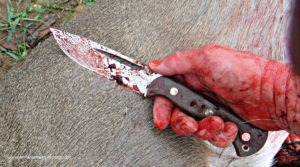
This Bark River Cub performed magnificently on a Mississippi buck.
A real selling point is the Cub’s generous handle. Mine got bloody and slimy while gutting a buck, but there was never any danger of my hand slipping. This is a knife that can be used for extended work sessions on multiple carcasses. Cub review
BR Sahara: This is another favorite that has been used hard. I got one as soon as they came out because of the Sahara’s five-inch blade, convex grind, clip point and swedge and Kalahari handle. My Sahara got used extensively on Mississippi deer.
The grand finale came when I was able to use the Sahara to split the rib cage of a bull elk. I didn’t need to pound on the spine or anything – the knife just did the job.
I don’t know why this knife is not more popular. It just flat-out works. Sahara review
Bark River Bravo 1.25 LT: I love the Bravo handle – it fits my hand really, really well. I love CPM 3V steel for its edge-holding and corrosion resistance. And I prefer a thin blade for a hunting knife. So the Bravo started out with most of my favorite attributes.
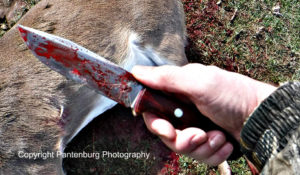
My Bravo 1.25 LT handled this whitetail easily.
The 1.25 comes with a drop point that suits most hunters really well. But, I prefer a clip point with a swedge, and that’s how I got my 1.25 modified. I used it very successfully on a couple of deer last season, and I believe the modified blade makes this combination very, very close to hunting knife perfection. Bravo 1.25 LT review.
Ambush Tundra: Made by Bark River Knives, the Tundra is one of my go-to knives. It features the popular Canadian leaf style blade, with the proven BR Aurora handle.
This combination of a quality blade design with a superb handle makes this a knife to use and depend upon. I love the hump in the spine – it centers the point, and the hump on the spine keeps you from piercing the entrails on that initial spine down, edge up cut of the abdominal cavity.
I’ve used my Tundra on several deer and a couple of elk, and it is one knife I don’t want to be without. Tundra review. Buy a Tundra here.
Carp Knives Classic Skinner: Hunting knives are specialized tools, and as hard as we look, there is no such thing as the ultimate, do-it-all knife that can do everything well.
This blade, made by newcomer Kendall Carpenter, is for the hunter primarily interested in a specialty skinning knife. It will work fine for gutting the animal, but it wouldn’t be my first choice for an all-around hunting knife.
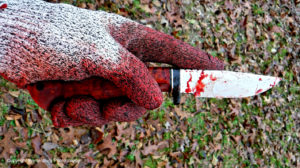
The Forged Hunter is a hardworking beauty.
The craftsmanship is excellent, and Kendall can make about any knife design you want. Here is the Carp Knives Classic Skinner review.
Cross Knives Forged Hunter: This is another beautiful knife that can work hard. Mine came with a curly maple handle and a black hilt, and it is drop dead gorgeous.
But using it on a whitetail doe proved that the design is also solid and useful. The Forged Hunter’s well-designed, five-inch handle allowed me to use the knife safely on a cold, rainy day, wearing cut resistant gloves. The Forged Hunter will make any deer hunter happy.
Reid Hyken Lite Hunter: Made by Bark River Knives, the Hyken Lite Hunter shows every sign of being a superb hunting knife.
Unfortunately, it was still in the field test queue when the last season ended, and on the day I carried the Lite Hunter, there was no harvest. I had sent the knife out with my nephew, Seth Lebarre, an avid duck and deer hunter, but he also managed to get blanked deer hunting.
But I have used the Hyken for other bushcrafting and camping tasks, and it came through with flying colors. IMHO (Like all of these comments!) the Hyken Lite Hunter could be your favorite deer hunting knife. I’ll let you know how it works out. Hyken Lite Hunter review
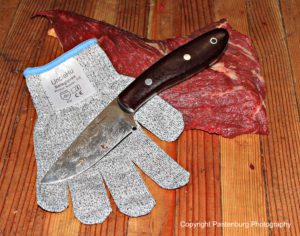
The Delaware is a good-looking user knife.
True Saber Delaware: I tested this knife at Addy’s Custom Meats on a Longhorn cow. The co-owner, Teheala Addy, tried out several excellent knives I had along.
Over the several-hour session, Teheala ended up using the Delaware the most. She commented that she liked the blade design, and the handle didn’t make her hand tired. (Her husband, Eric, preferred the Bravo 1.25 LT.)
And this is one of those personal, ticky, nit-picky things I just had to throw in here – I LOVE it when knives made in America are given names that honor American people or places. It just seems right.
This Delaware has a lot going for it, and it won’t disappoint a hunter. Buy a Delaware.
Honorable mention:
L.T. Wright Genesis: Based on the Kephart design, the Genesis is a workhorse knife that easily handles deer hunting tasks. The large, generous handle works well while wearing gloves, and the four-inch blade and spear point are designed to work hard.
While it’s not touted as a hunting knife, per se, the Genesis should be in the running for any hunter who wants a well-designed bushcrafter that can also be an excellent hunting knife. Genesis review Buy a Genesis
Cold Steel SRK: This knife made the list because I have used it as a hunting knife for 20-some years with complete satisfaction. The SRK has been used on dozens of deer and several elk. It has been carried hundreds of miles of backpack, backcountry hunts. Price is not always an accurate indicator of knife quality, and the SRK has never let me down. Here is the SRK review – get yours here.
Mora 840 Companion: This inexpensive knife keeps making the list year after year because Dr. Patrick Simning, a successful hunter friend of mine, refuses to quit using his on big game animals. A couple years ago, I gave Pat a Bark River Snowy River, which he uses frequently.
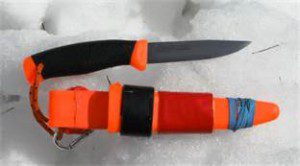
An inexpensive Mora is a good choice for a beginner knife.
But his Mora goes on every hunt, and has been used on deer, elk, hogs, caribou and moose. The Mora Companion is a standard with Boy Scout Troop 18 in Bend, Oregon. Over the years, the troop and ordered and distributed 90 of the Companions. It is a fine hunting knife, and the low cost makes it affordable for beginner hunters.
So that’s what I have so far for field test hunting knife reviews.
I will start deer hunting is a month or so, and hopefully, will have more animals to use knives on. Start gearing up for the opener, and stay safe!
Please click here to check out and subscribe to the SurvivalCommonSense.com YouTube channel – thanks!
Please order my book Bushcraft Basics: A Common Sense Wilderness Survival Handbook at your local book store: https://www.indiebound.org/search/book?keys=bushcraft+basics
or on Amazon: https://tinyurl.com/y9fjud9y
or at Barnes and Noble: https://tinyurl.com/Barnes-and-Noble
Thanks!

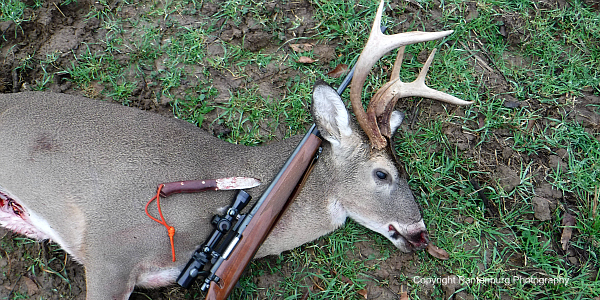
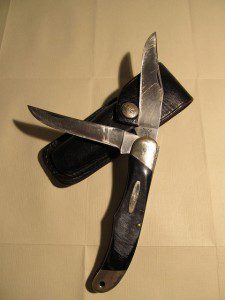
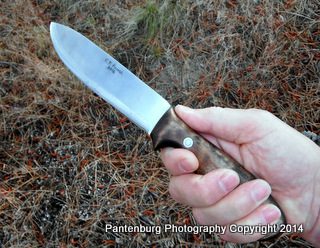
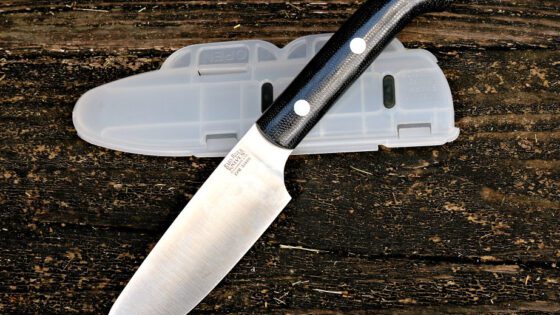
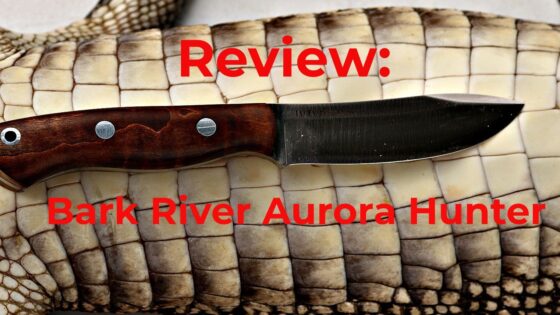
tirod
Good discussion and selection. Too many of these articles are just influencer recommendations of the highest bidders in the market – and their choices are too often so far out of whack that a box knife would be a better choice.
What a lot of us want is also difficult, an affordable factory knife that will get the job done. But that’s fraught with the tribalism of Branding and avoiding it isn’t wrong.
Since I don’t get paid for an opinion, and things have changed over the last 45 years, I just recommend features. 3-4″ drop point, flat ground, simple handle. What doesn’t work, clip points – the Bowie was a self defense knife meant for the wrong kind of gutting – or gut hooks – it’s a messy way to accomplish what the drop point does without making it weaker – and any association with tactical. Replaceable blades are proprietary and rarely in stock in a storefront. Unless its a box knife.
A simple field dressing knife is also a decent field knife and useful for camp chores, too, They are around, buried in catalogs and often ignored by the marketers who promote flash in pan high profit knives. For someone who plans more than a few years of hunting – I have been pretending to for 45 years – it’s better to get a good knife early on rather than work thru a number of them which all have some annoying flaw.
Shop for specifications, folks not brands or fads.